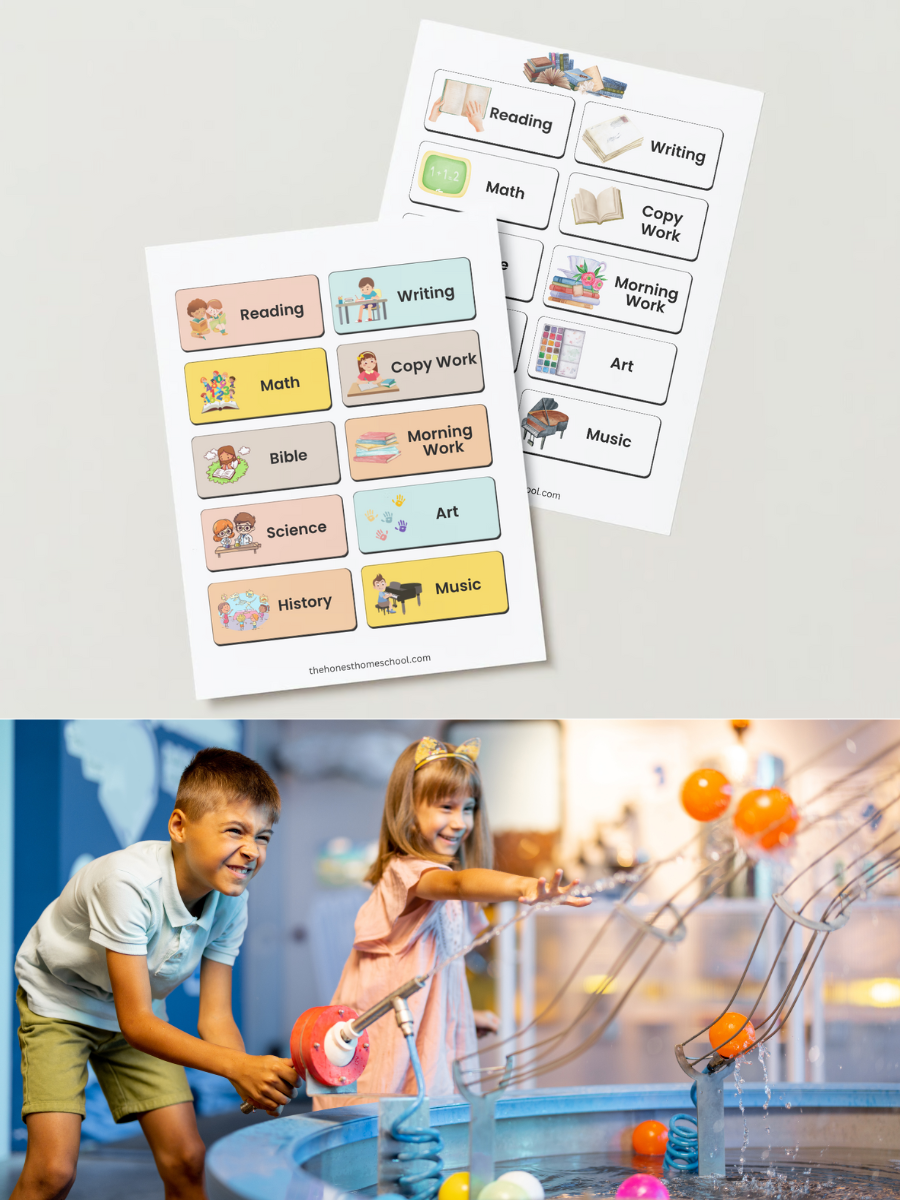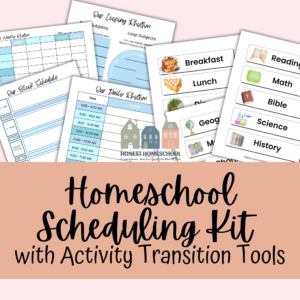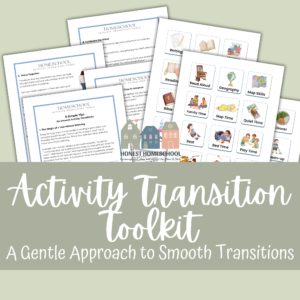Navigating activity transitions from one activity to another, from school work to and from a break time, can be a challenge for our young children. Moving from a ‘preferred’ activity to a different one can bring up some of those big emotions!
Transitioning from one activity to another can be a challenging experience for young children. Whether it’s moving from schoolwork to playtime, or from a fun activity to a less preferred task, these shifts can evoke a range of emotions. As parents, understanding how to facilitate these transitions can make a significant difference in our children’s experiences and overall behavior. In this blog post, we will explore practical strategies that can ease transitions for young children, helping them feel more secure and engaged during these shifts.
“Children, obey your parents in the Lord, for this is right. Honor your father and mother, that it may be well with you, and you may live long on the earth”.
Ephesians 6:1-3
For young children, transitions are not just about moving from one task to another; they often signify a change in their environment, routine, or emotional state.
Understanding the Challenge of Transitions
For young children, transitions are not just about moving from one task to another; they often signify a change in their environment, routine, or emotional state. Children thrive on predictability and familiarity, and sudden shifts can lead to feelings of anxiety or frustration. When a child is engrossed in a preferred activity, the thought of having to stop and move on can trigger big emotions—crying, tantrums, or resistance.
By providing our children with the right tools and strategies, we can help them in navigating activity transitions more smoothly. Here are some effective tips to consider:
- Two-Minute Warning
One of the most effective strategies for easing transitions is the two-minute warning. This involves giving your child a gentle reminder that it’s almost time to switch activities. Making eye contact while delivering this reminder can reinforce the connection and help your child feel more secure. Although our little ones may not fully grasp the abstract concept of time, this warning allows them to mentally prepare for the change, making the transition less jarring.
For example, you might say, “In two minutes, we will put away our toys and go make some lunch.” Repeating this a few times can also help reinforce the message. By establishing a routine around this warning, children can begin to anticipate transitions, increasing their sense of control.
- Visual Schedules
Creating a visual schedule can be a game-changer when it comes to transitions. Children often respond well to visual aids, which can help them understand what to expect throughout the day. Sit down with your child at the beginning of your homeschool day and review the schedule together.
For instance, you might say, “First, we’ll read our bible story together, then we’ll play outside. After that, we’ll come back inside and do our math together!” You can use the large Homeschool Schedule for the wall and a smaller Page or the Pocket size one that your child can keep with them. Using Velcro dots to attach pictures of each activity allows your child to remove them as they complete them, giving them a sense of accomplishment and responsibility. We like these zippered pouches to contain all the picture cue cards.
Our Homeschool Schedule Pack is fully editable so you can create the picture cues you need. Take pictures of your child’s favorite toys, people and locations so that you can customize your child’s daily visual routine.
Enhancing the schedule with fun activities—like a hug for mom or a quick game with the dog—can make it even more appealing.

- wPre-Dialogue about Break Activities
Engaging your child in a brief conversation about break activities before the day begins can set the stage for smoother transitions. Discuss what they would like to do during their break, offering a few choices that you have pre-determined. This not only gives them a sense of control, but also allows them to focus on something positive to look forward to.
You might ask “During our break, would you like to play with the blocks or read a book?” You can also use pictures to represent these activities on the visual schedule. Additionally, consider placing the chosen toys or activities in a visible but out-of-reach area to build anticipation without temptation.
Tip: take pictures of your child’s favorite toys, people and pets and add them to the editable picture cues pages
- Introduce a Transition Buddy
Another effective strategy is to introduce a transition buddy—a favorite toy or stuffed animal that your child can hold during transitions. This buddy serves as a comforting companion, helping to ease anxiety associated with changing activities. His buddy can be something very small that he can fit in his hand, like a Lego figure, or small stuffed animal. The toy can be sitting on the table while he works, or sit on the chair with him.
When it’s time to transition, you can redirect your child’s attention to their buddy, saying things like,
“Let’s take Teddy with us to the next activity!”
“Wouldn’t Teddy like a snack right now? Let’s go get some!”
“I think Teddy really likes playing Magnatiles on his break.”
This approach shifts the focus from what they are leaving behind to the new adventure they are embarking on with their buddy.
It can transform the transition into a more positive experience, making it feel more like a shared adventure with his buddy rather than a daunting task.

- The Power of Familiarity
Familiarity can be a powerful ally in helping children navigate transitions. Whenever possible, accompany your child as they move from one activity to another. Being present during these shifts can provide the reassurance they need. You might say, “Let’s go back inside together. I’ll be right here with you!”
This approach not only helps calm their nerves but also fosters a sense of security. Your presence makes it easier for them to adjust to the new activity.
- The Role of Touch
Physical touch can be an effective tool in redirecting attention and easing transitions. A gentle touch on the shoulder or a warm hug can help your child feel supported during challenging moments. This simple act of connection can remind them that they are not alone in this transition back to a less desirable activity, and that you’re there to guide them through it.
- Rewarding Desired Behavior
Focusing on positive reinforcement is crucial when it comes to managing transitions. Rather than reacting negatively to resistance or frustration, concentrate on rewarding good behavior. Implementing a sticker chart can be an excellent way to encourage positive transitions.
When your child listens and transitions smoothly, reward them generously with stickers or verbal praise. For instance, saying, “I really like how you listened and came back to your work!” reinforces positive behavior and motivates them to continue improving.
- Celebrate Successful Transitions
Finally, it’s essential to celebrate successful transitions. When your child transitions back to school work after a break, praise them and let them know how proud you are of their efforts. Excitement and enthusiasm can go a long way in reinforcing positive behavior. You might say, “I’m so proud of you for coming back to your work! Great job!”
Recognizing their accomplishments, no matter how small, helps children feel valued and encourages them to embrace transitions with a positive attitude.
Navigating activity transitions can indeed be challenging for young children, but with the right strategies in place, it can become a more manageable experience. By implementing techniques such as providing a two-minute warning, creating visual schedules, engaging in pre-dialogue about breaks, introducing a transition buddy, and using touch and positive reinforcement, parents can help their children navigate transitions successfully.
Remember, new skills take time to learn, and patience is key. Each child is unique, and what works for one may not work for another. Experiment with different strategies and observe how your child responds. Over time, you’ll discover the techniques that resonate most with your little one.
As you embark on this journey of facilitating smoother transitions, be encouraged! Your efforts to support your child during these changes will foster resilience, adaptability, and emotional growth.
We’d love to hear your experiences and any additional tips you’ve found helpful in your homeschooling adventures.
Let’s continue to share and learn from one another as we guide our children through these essential life skills!
Share your ideas with The Honest Homeschool Community below.
Looking for extra support with transitions in your homeschool?
If you found these tips helpful, you might enjoy the new resources in our shop designed to make daily transitions a little easier (and a lot calmer). The Homeschool Activity Transition Toolkit and the Visual Homeschool Schedule Kit were both created with visual learners and gentle routines in mind—giving you practical tools to support your child through each part of the day. They’re editable, visual, and flexible enough to fit your unique homeschool rhythm.
Written by Rebecca
You Might Also Like…
Working Homeschool Mom: Practical Tips
Get practical tips for balancing work and homeschooling. Learn time management, scheduling, and grace-filled strategies to thrive as a working homeschool mom.




